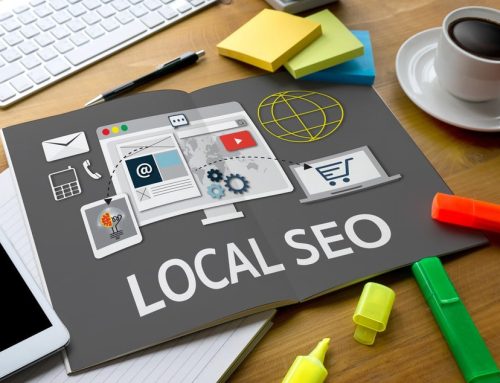Unlock Potential: Local vs. Online Marketing Solutions
In an era where visibility is currency, small businesses and growing brands often face a critical decision: Should they prioritize local outreach or invest in broader online tactics? The answer isn’t always obvious—and it’s rarely one-size-fits-all.
Understanding the strengths, limitations, and applications of each approach is key to building a results-driven marketing strategy. In this article, we’ll break down the difference between local and online marketing, highlight how each can serve your goals, and explain why the most effective solution might be a thoughtful combination of both.
What Is Local Marketing?
Local marketing focuses on reaching audiences in a specific geographic area. Whether you’re a neighborhood coffee shop, a dental practice, or a regional boutique, your core audience lives or works nearby. The goal of local marketing is to establish a physical and emotional presence within your immediate community. Examples of local marketing include:
- Sponsoring local sports teams or community events
- Running ads in nearby publications
- Offering promotions through local radio, flyers, or signage
- Listing your business in hyperlocal directories or city guides
- Hosting in-person events or partnerships with other local businesses
This approach is particularly powerful for brick-and-mortar locations or service-based companies that rely on foot traffic, walk-ins, or geographic loyalty. It’s about being visible where your customers live—and building real-world trust and familiarity.
What Is Online Marketing?
Online marketing—often referred to as digital marketing—leverages internet-based tools and platforms to reach potential customers. Rather than focusing on proximity, this approach centers on targeting behavior, interests, demographics, and search intent, regardless of location. Key components of digital marketing include:
- Search engine optimization (SEO) for better visibility on Google
- Email campaigns and automations
- Pay-per-click (PPC) advertising
- Content marketing through blogs, videos, and lead magnets
- Conversion-optimized websites and landing pages
- Social media marketing across platforms like Instagram, Facebook, and LinkedIn
The digital approach opens doors to a much wider audience—and it can be incredibly effective for businesses offering remote services, e-commerce, or scalable offerings. It also allows for robust data tracking and performance optimization, which are more difficult to achieve with traditional local tactics.
Local Marketing: Strengths and Limitations
Local marketing offers real-world impact in a way digital tools can’t fully replicate. When someone sees your brand on a community event banner or receives a recommendation from a neighbor, that trust is tangible. It builds familiarity and loyalty that can last for years.
Strengths of Local Marketing:
- Stronger personal connections: Face-to-face interactions help create loyal customers.
- Immediate trust: People are more likely to support businesses that show up in their community.
- Better word-of-mouth: Satisfied customers talk to their neighbors and friends.
- Ideal for physical stores and service areas: If people need to walk into your business, this is your foundation.
But it’s not without limitations. Traditional local marketing can be hard to measure, slow to scale, and limited in reach. For businesses looking to expand beyond their neighborhood, relying solely on local efforts may restrict growth.
Limitations:
- Scalability is limited to your physical region.
- Performance tracking can be vague or non-existent.
- Cost per impression may be higher in traditional channels (e.g., radio, print).
- Geographic saturation can cap your audience potential.

Online Marketing: Strengths and Limitations
Digital marketing offers reach, flexibility, and detailed analytics. It allows businesses to meet their customers where they spend most of their time: online. Whether you're targeting someone searching for your services on Google or reaching new audiences through Instagram reels, digital channels provide powerful tools for engagement.
Strengths of Online Marketing:
- Scalable reach: Reach 1,000 or 100,000 people with similar effort.
- Real-time performance insights: Easily track clicks, conversions, and ROI.
- Audience targeting: Use behavior, interests, and intent to speak to the right people.
- Automation: Email nurturing and paid ads can work while you sleep.
Still, the digital world comes with its own challenges. The landscape is crowded, algorithms are always evolving, and it can take time to see measurable results—especially with search engine optimization, which is a long-term investment.
Limitations:
- Greater competition in nearly every industry.
- Longer ramp-up time for organic visibility through SEO.
- Constant changes in platform rules and performance trends.
- Potential disconnect from community-based audiences.
How to Combine Both for Maximum Impact
The truth is, you don’t have to choose between local and online marketing. In fact, the smartest strategies often combine both. By weaving together offline presence with digital reach, you can strengthen your brand across multiple touchpoints and make it easier for potential customers to find and trust you.
Real-World Examples
The Bakery That Builds a Community
A family-owned bakery decides to sponsor a local elementary school fundraiser. In addition to donating pastries, they hand out beautifully designed flyers that include a QR code linking to an Instagram giveaway: “Post a photo of your favorite treat and tag us to win a dozen cupcakes.” This initiative turns a single-day event into an ongoing digital campaign.
Not only does the bakery reinforce its presence in the neighborhood, but it also sees a surge in online engagement, follower growth, and user-generated content. Parents tag friends, the school shares the post, and the bakery gains long-term digital traction from a one-time local appearance.
The Fitness Studio That Converts Attention into Action
A fitness studio wants to grow its class sign-ups ahead of the summer rush. They host a free outdoor yoga session at the local park—but instead of relying solely on word-of-mouth, they promote it using a Facebook ad campaign geo-targeted to users within a 10-mile radius.
Attendees are encouraged to sign in with their email at the event, which automatically enrolls them in a post-event email sequence with special offers. By combining local event participation with online lead generation and nurture emails, the studio not only fills classes but also builds a database of local contacts for future campaigns.
The Law Firm That Builds Local Credibility and Digital Authority
A mid-sized law firm specializes in estate planning. They’ve invested in consistent search engine optimization and now rank well for terms like “estate attorney in [city]” and “living trust lawyer near me.” But they don’t stop there.
To reinforce their visibility and authority offline, the firm participates in business networking events and offers free community seminars at the local library. These efforts humanize their brand, create referral opportunities, and help them stay top of mind locally—even while their digital strategy brings in leads around the clock.
Tactics to Consider:
- Use digital platforms to promote local events and offers.
- List your business in both local directories and on major review platforms.
- Incorporate location keywords into your SEO strategy.
- Use geo-targeted social media marketing to support in-person efforts.
- Create Google Business Profile posts that mirror your in-store promotions.
When local and online efforts support each other, they don’t just add value—they multiply it.
Choose Tools That Fit Your Goals
There’s no one-size-fits-all formula for marketing success. What matters most is choosing the tools and channels that align with your business goals and speak to your target audience—whether that means showing up at a community fundraiser, dominating local search results, or launching a nationwide Facebook ad.
At Design It Right, we help small businesses blend the best of both worlds. As a local agency, we understand the power of community presence. As digital strategists, we know how to turn that presence into long-term growth through digital marketing, SEO, and social media marketing strategies built for your goals.
Ready to unlock your full marketing potential?
Let’s talk. We’ll help you design a custom strategy that meets you where you are—and gets you where you want to go.




